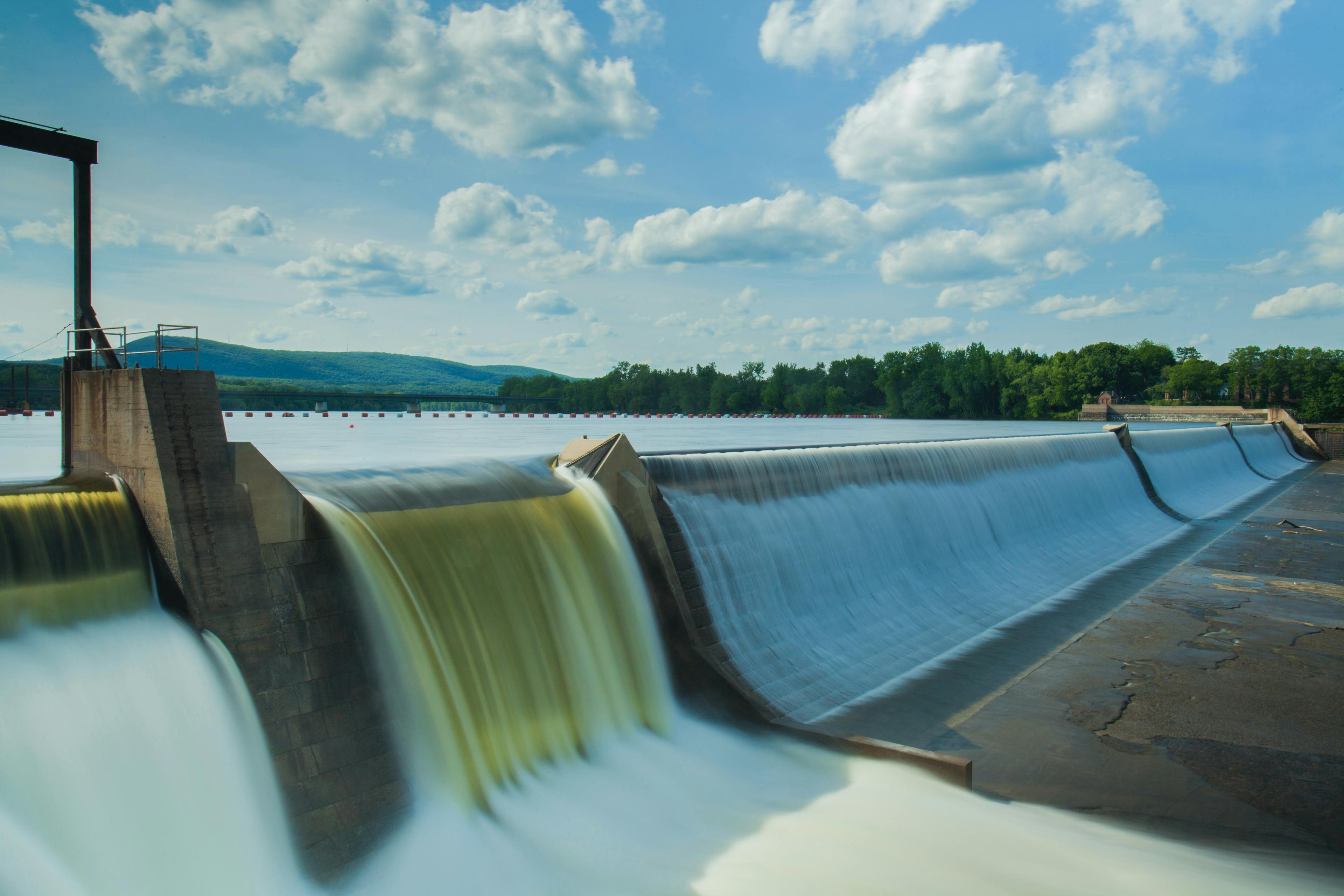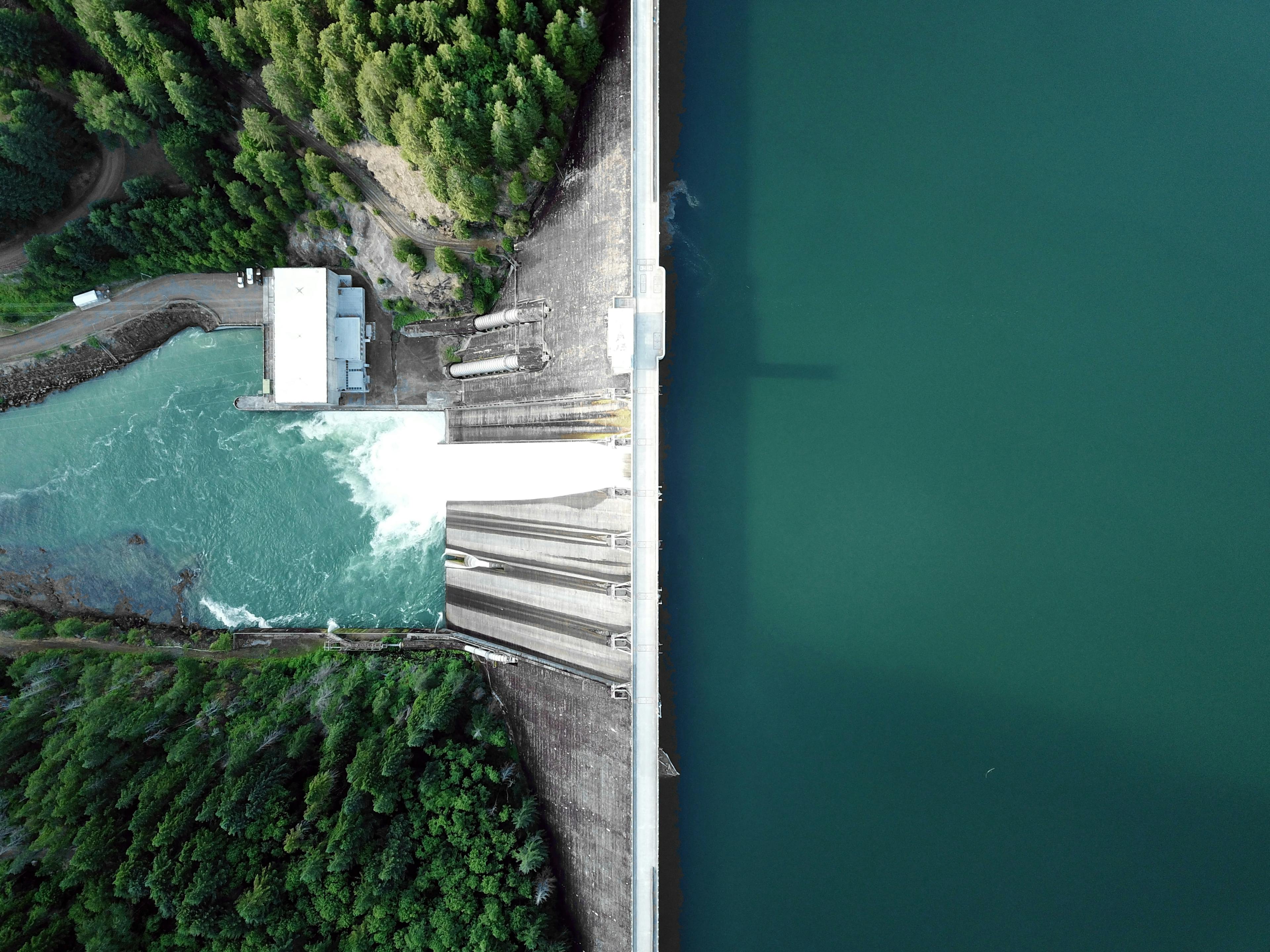Hydropower Project Funding: Funding Your Hydropower Project
1 Nov 2023

Hydropower Project Funding: Funding Your Hydropower Project
Hydroelectric power is gaining popularity as a renewable and sustainable source of energy as the world seeks to transition towards a cleaner and greener future. Hydropower projects have become an attractive option for investors and project developers given their strong reliability and predictability. Whereas popular renewable energy sources like solar and wind only produce energy when certain conditions are met, hydropower is a source of base power. It acts as a consistent source of energy which is very important in ensuring energy security. The United States Department of Energy has even referred to hydropower as “The Guardian of the Grid” which shows the importance of this sector.
However, the development of a hydropower project requires significant capital investment, in terms of upfront material and planning costs and securing funding can be a major challenge. This guide will focus mainly on funding for smaller-scale “micro-hydro” projects, though the same ideas apply to larger-scale projects seeing as funding for many renewable energy projects use the same techniques (see our articles on funding utility-scale solar and wind projects). We will explore the various sources of funding available for hydropower projects and provide insights into how to successfully fund and build your hydropower project.
Whether you are an investor, project developer, or simply interested in the world of hydropower, this article will provide you with valuable information on how to navigate the complex landscape of hydropower project funding.
Benefits of Developing a Hydroelectric Power Project
Developers may seek to get involved with hydropower projects for various reasons and benefits. Renewable energy projects are not only profitable but great for the environment so you can feel great about helping the world while making money!
Sale of Electricity
The first financial benefit of hydroelectric power is the potential of profit from the sale of electricity that the project generates. This could be sold directly to governments, utilities or other corporations either at the prevailing market rate or a predetermined rate if a power purchasing agreement has been established in the planning stages. The amount of electricity produced will depend on the size of the project with larger-scale projects producing more energy at the cost of higher initial capital and investment requirements. With careful planning, these projects can be very profitable no matter the size. A later section of this guide will explore the financial and planning risks to consider before embarking on such a project.
Additionally, hydropower is considered to be one of the most efficient energy sources due to the way that electricity is created in hydropower projects. Through converting potential and kinetic energy to electric energy, there is less risk of energy losses such as heat loss which can occur when the energy has to go through several transformations to become electricity, for example in solar panels. This, coupled with the consistency of hydropower means more bang for your buck!
Sale of Project
Another source of profit is in the potential of selling the project to a larger developer or other interested party. Developers or investors may look to acquire smaller hydropower projects to integrate into larger community projects, or just to expand their portfolios. The predictability of hydroelectric power makes these kinds of projects very attractive.
Different Types of Hydropower Projects
There are several types of hydropower projects, ranging from micro-hydro to larger utility-scale storage hydropower projects. Each comes with its own advantages and may be suited for developers with varying goals. Additionally, different projects are better fits to different locations, with some requiring more space or building of additional features.
Run-of-the-River
“Run of the River” hydropower projects are a great source of base load power because they run constantly using the current of rivers. These systems benefit from the naturally occuring kinetic energy in rivers to create electricity. With this, the water flow drives turbines connected to a generator thus creating electricity.
Micro-hydro, which are hydroelectric power projects producing less than 50 kW, uses these systems which generate less electricity but are easy to build relative to utility-scale hydropower. The systems are sometimes built directly into rivers or use diversion techniques wherein the water is pumped through tubes to the power-generating system before being returned to the river.
Impoundment/Storage
Impoundment and storage hydropower projects get their name from exactly how they function. These systems, similarly to run-of-the-river systems, generate electricity using turbines and generators, however the “current” is created artificially. In impoundment hydropower projects, water is collected using large dams or reservoirs and subsequently released downwards in order to produce the kinetic energy needed to drive the turbines.
The benefit of these larger-scale projects compared to run-of-the-river projects is that project owners can choose to use them to generate electricity for base-load or peak-load demand. This means either having consistent generation with water constantly flowing, or they can choose to block the dam and it off or quickly start up the electricity generation when demand is high.

Pumped-Storage Hydro (PSH)
The largest scale hydroelectric power projects are in the form of “pumped storage-hydro”. This operates similarly to impoundment power techniques, using gravity to create kinetic energy in the “current” of the water. These systems essentially operate as large batteries. When demand is low, PSH systems use excess energy to pump water to reservoirs located at higher elevations. Then, when this energy is needed to support higher demand, water is released downwards, driving turbines to create electricity. This means that PSH also provides both peak and load power. These systems are also generally much larger - requiring significant amounts of both capital and land.
Difficulties of Generating Funding for Hydropower Projects
Securing funding for hydropower projects can be a challenging process, largely due to the risks associated with early-stage renewable projects. However, they are tremendously beneficial to developers once completed. The way to get over this hurdle is by making sure all planning and permission requirements have been completed prior to looking for funding. This will decrease risks associated with the project thus helping to make investors and lenders feel more secure about providing capital.
This section will provide strategies for planning, including suggested studies to conduct, and permission requirements to keep in mind for hydropower projects.
Site Planning
Choosing the right site for a hydropower project can be very important in terms of efficiency and predictability. This is because a site with the right geographical features will lead to a better return on investment.
To ensure success, feasibility studies can be conducted to test the average energy that would be generated at specific sites. Additionally, this will allow you to gain additional information about your predicted revenues to provide to investors.
For micro-hydro projects, sites with stronger currents and flow are the best because this increases the amount of energy produced at no additional cost. This means that rivers that are naturally downward flowing, especially steep ones, are the most profitable sites. Alternatively, sites where steepness can be created artificially are also suitable. However, this may come with additional permission requirements as this would involve changing the course of water in the site.
Permissions
Another important consideration is the planning requirements that must be approved before construction begins. These requirements are mostly aimed at environmental protection so this process could include getting licenses or conducting studies to ensure safety. However, this will vary between countries and even between towns and zones in most cases.
In the United Kingdom, for example, you may need to get an abstraction license from the Environmental Agency in order to divert the water. This process can be lengthy, so looking into this early is the best course of action.
Additional requirements are likely to include performing studies to determine if your hydropower project will threaten fish passages - specifically those of any rare species, or carry any risk of harming humans through flooding or other disturbances.
Different Types of Hydropower Project Funding Options
Some developers may have the finances available to take on the entire financial burden of the project. However, given that renewable energy projects tend to have relatively high upfront costs, this is generally not the case and external funding will be required.
There are a few ways to go about this, including traditional bank loans, project financing, and equity - usually, some combination of these will be the best course of action. Finding funding for early-stage projects can be challenging due to investor hesitation. This is caused by the aforementioned risks associated with planning requirements and concerns over revenue generation. The irony of finding funding is that it is complicated to get access to capital without already having a source of guaranteed funding. Investors and lenders can be hesitant before a source of revenue is established. The solution? Power Purchase Agreements.

Creating Initial Revenue Flow: Power Purchasing Agreement
Power Purchase Agreements (PPAs) allows developers to lock in revenue before the project is even completed. It consists of a long-term (usually 10+ years) contract between an energy buyer and developer to buy/provide electricity at a fixed rate over the period of this agreement.
The energy buyer could be a company, government, or any other interested party with the best options obviously being those least likely to default on the agreement. Governments or quasi-government organisations are generally regarded as the preferred buyers, though other reputable companies can also be great options.
PPAs are a great way to “de-risk” revenue when the buyer is chosen carefully. They are the key to getting your project off the ground as they open the door to the other sources of funding discussed below.
Debt directly held on Company Balance Sheet
Debt can often be a source of relatively cheap funding. This applies in renewable energy development companies, their projects, and throughout wider financial markets. As a result, debt often makes up a large portion - sometimes 60-80% of the required funding amount. However, it can be challenging for developers, especially new players, to get company loans directly on their balance sheet. Understanding how banks perceive risk is key to negotiating the best possible terms for loans. Lenders could use historical metrics such as the borrower's history of repayment patterns, as well as their current assets, and the risk associated with their revenue sources to evaluate the borrower’s ask. Developers with little or no history of developing projects and the respective cash flows, are last in the pecking order for company loans. However, there is a solution for developers in the form of borrowing without being restricted by the credit history or balance sheet size, and it comes in the form of Project Finance.
Project Finance
Project finance has revolutionised the development process due to the ability to discretely isolate the risks of a project from the company. This enables higher borrowing potential, whilst making the overall process more efficient. The method of project financing centres around placing the project into a Special Purpose Vehicle (SPV), which is a new entity specific to the project, and which typically begins life as a fully-owned subsidiary of the developer. The advantage of using an SPV is that the asset and associated financials and risks are managed at a project level. This means any loans are the responsibility of the SPV and the debt repayments are made solely from cash flows generated by the revenue of the project.
Forecasts of future revenues and costs can together be used to create a model, forecasting the cash flow available for debt service (CFADS), This CFADS can then be used by a bank or lender to help with the decision of how much debt they may be willing to lend the project.
Because the SPV is a new entity, it naturally has no credit history. The good news is though, it has no liabilities or accrued overheads either. It is a blank slate, and hence there are little to no externalities to consider when modelling its cash flows. If the entity were to obtain a large loan to be used to fund the build of a highly predictable cashflow-generating asset, the resulting cash flow can therefore be calculated with a correspondingly high degree of accuracy. Any remaining risks are mitigated or insured away as best as possible, and the result is a financial structure which can be replicated like a ‘cookie-cutter’, creating a very scalable business.
However, the amount of debt which can be raised may be limited by any of the following factors:
(a) Loan to asset value
(b) Maximum debt which can be supported by CFADS without breaching debt covenants (like Debt Service Cover Ratio (DSCR)
This means that more often than not, there remains a 15-40% funding shortfall, which needs to be covered by equity or other forms of capital. Equity
So there is still a funding shortfall required to finish the project. Developers often look to equity (or similar, ‘quasi-equity’, types of capital) for this and will sell shares of the SPV/project in exchange for funding. This holds the added benefit of no traditional “repayment” necessary as with a loan.
While lenders generally only have exposure to project downside, equity shareholders / investors can also profit from project upside. This exposure can be very valuable indeed, and as a result they are more willing to take on risk and higher volatility of returns in order to acquire it.
Owners of the project can raise equity capital by selling shares of the project, with the added benefit of having no fixed “repayment” as per a loan, and hence risk levels in the project are not increased further.
There are, however, multiple reasons that equity can be sought. Sometimes, project owners choose to raise equity because they have a funding shortfall and no other debt options available to fill it. However, even if these options are available, there are often strong reasons to raise some equity in the project from the perspective of optimising the financial structure and Weighted Average Cost of Capital (WACC). In short, too much leverage and hence too high a schedule of fixed repayments in the project can increase financial risk to a degree where interest has to be significantly raised to compensate the lenders, thereby reducing the benefit of using debt as a cheap source of capital in the first place. Finding the optimal balance to minimise WACC is another exercise for the financial modellers to solve! As the International Energy Agency remarks: “hydropower projects have longer pre-development, construction and operational timelines than other renewable energy technologies, investment risks are higher, requiring specific policy instruments and incentives as well as a longer-term policy perspective and vision”. Equity is especially valuable in hydroelectric power projects - so keep this in mind when you arrive at the funding stage. Gain access to a global network of investors using the PF Nexus platform.
How to Find Investors, Lenders, and Developers for a Hydropower Project
Finding funding can be a challenge for even the most experienced developers. Though it is exciting to get to these final stages, it can be discouraging if this is preventing you from getting your project off the ground. Finding investors without an established network can be difficult and constantly reaching out to new people may take up a significant amount of time. This can be especially frustrating if the “interested” parties you are speaking with don’t seem to be committed.
Don’t let this be what’s stopping your project from starting construction! PF Nexus has a digital marketplace with over 5,000 users looking to invest in renewable energy projects. This will help to streamline the funding process so you can focus on project development. Additionally, by letting the funding come to you you can be sure that the people you are connecting with are genuinely interested in your project.
Signing Off
Let’s get your project started today! Submit your project to PF Nexus (takes just 2 mins) to help you get funding. Contact us with any questions or to find out more.